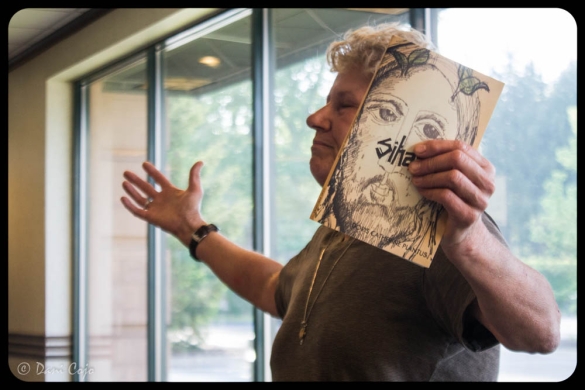
Plantus said that she wrote “Sihastrul” on the premise that if someone found it in a cave somewhere in the future, and they treated like something that was ancient, what would they have to say about it?
“It’s cosmic,” she said with wonder.
Cosmic is the best way to describe her novella.
The meaning of the book changes each time it is read. It’s about the search for meaning in the very first word, a quest to discover identity, a tale about the beginning of the world. This small novella has big ideas, strong language, and mystical elements packed within it. She mixes prose and poetry to create several small books that are linked together to form the story of “Sihastrul, the Hermit.” The books are written by a variety of narrators, each an important character in the story. Some include the Hermit, his Mother, the Old Angel, God, and the Butterfly. Each one has a well-developed personality that brings them alive on the page.
The reader has the choice to read the books in any order if they’d like, because all of the books are interconnected and jump around in space and time. There is no right or wrong way to read. I read it from front to back, which I believe would be the best way to read it (it was organized in that way for a reason.) The clues, or breadcrumbs as I like to say, that lead you down the story’s path is much more rewarding that way.
One of the biggest mysteries of the novella is the identity of the Hermit. Do not expect an answer by the end. It is left entirely up to the reader to try and use the breadcrumbs, as I said earlier, to discover his identity. After all, not even the Hermit is entirely sure who he is either.
